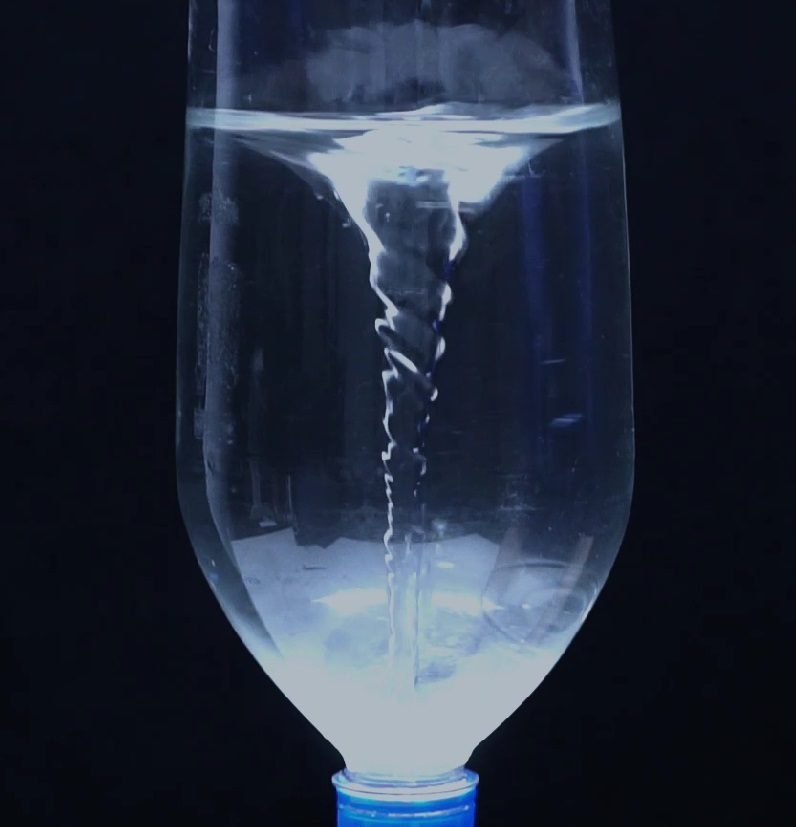097 – Bottle Tornado
Water vortex
Bathtub swirl
Introduction to:
- Vortex
- Rotational hyperboloid
- Centrifugal force/centripetal force
- Conservation of angular momentum
- Vortex funnel
Material:
- 2 plastic bottles (= PET bottles, recommendation: volume 1.5 liters, absolutely transparent!)
- Hard plastic connector, commercially available
Or
- 2 lids
- Hot glue with gun
- Sandpaper
- Scissors
Instructions:
- Take the finished connector
Or make one yourself:
- Roughen the surface of the two lids with sandpaper and glue them together
- Use the scissors to drill a hole in the center of the lids. The diameter should be about 5 mm.
- Fill one of the two bottles with water, leaving about five centimeters of air at the top.
- Screw the second, empty bottle onto the top of the connector.
- Turn the two bottles over so that the full bottle comes up.
- Spin the water in the top bottle by swirling. This requires some practice. Swirl the bottle like a large glass of water, always in a circle, as if you were stirring in a large saucepan.
- Keep the bottles still and watch!
Observation:
- A vortex funnel forms in the upper bottle
Tips:
- If the connection isn’t completely tight, place a bowl underneath it or experiment outdoors.
- Experiment with turning the bottle slower or faster
Didactic potential:
- The bathtub vortex exerts a great fascination!
- The shape of the vortex can be explained theoretically with secondary school mathematics: The vortex is a consequence of the conservation of angular momentum:
1. Task:
- Explain why a water particle m in a water vortex rotates faster (i.e. greater rotational velocity v ) the closer it gets to the axis of rotation! This happens when it is sucked into the vortex.
2. Task:
- Show: The surface forms a rotational hyperboloid!
- Note: The inclination of the water surface (angle α ) results from the sum of the forces of centrifugal force and the weight force of the volumetric piece. (Forces in the rotating reference frame)
